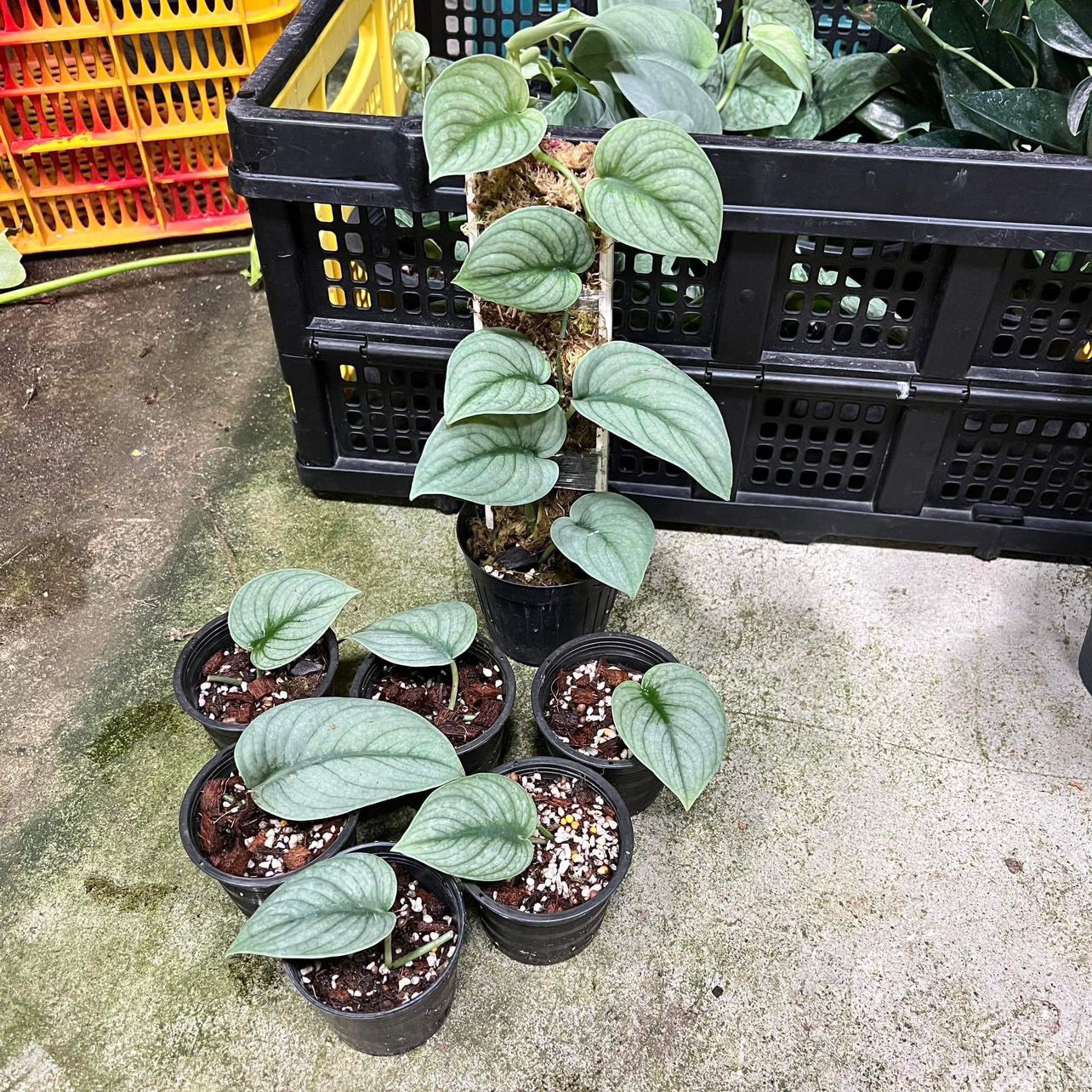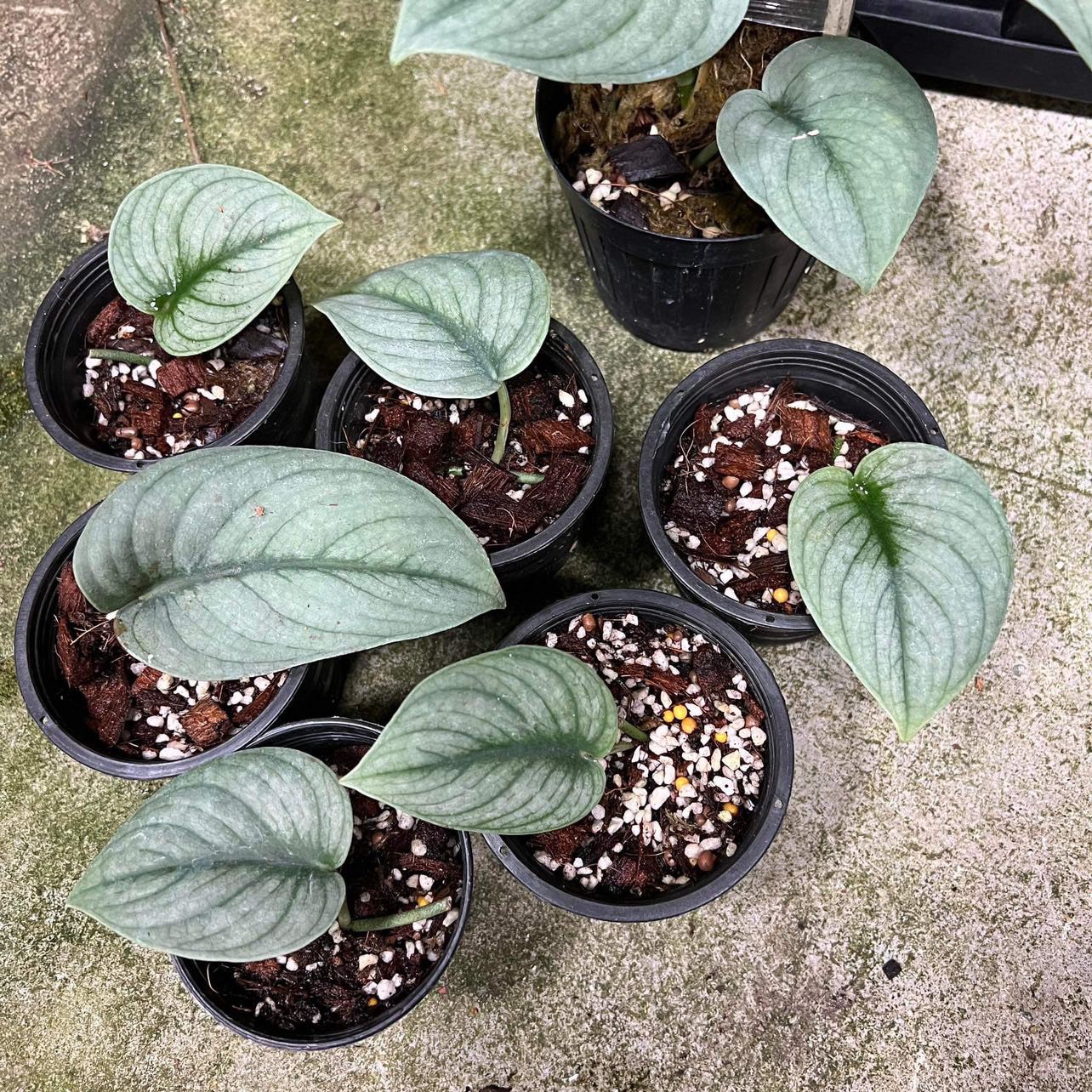The Scindapsus sp. Green Veins, also known as Satin Pothos or Philodendron Green Emerald, is a gorgeous vining plant known for its velvety green leaves with striking silver or white veins. This low-maintenance plant is easy to care for and makes an excellent addition to any home or office. With just a few simple tips, you can unlock the full beauty of this plant and have it thriving in no time.

Step 1: Provide Bright, Indirect Light
Importance of Light
The Scindapsus sp. Green Veins thrives best in medium to bright, indirect sunlight. This means a spot near an east, west, or lightly shaded south facing window. Bright light brings out the vibrant green and white colors of the leaves.
Signs of Insufficient Light
If the plant doesn’t get enough sun, the leaves can become smaller and lighter in color. Fewer new leaves will emerge as well. Moving the plant to a brighter location will help it perk up quickly.
“For additional insights on optimizing light for your Scindapsus, the article “How to Grow Scindapsus in 5 Easy Steps“ offers valuable guidance on light requirements and placement strategies.”
Step 2: Use Well-Draining Soil
Soil Mixture Recommendations
These tropical plants need a light, airy potting mix that drains well. Aim for a blend of 60% peat moss or coconut coir, 20% perlite, and 20% bark or charcoal. This combo prevents soggy soil that leads to root rot.
“When preparing the ideal soil mixture for your Scindapsus, refer to “Scindapsus 101: A Beginner’s Guide to Understanding and Growing“ for comprehensive advice on soil composition.”
Appropriate Pot with Drainage Holes
Always use containers with bottom drainage holes. Plastic pots work well and help retain some moisture. Match pot size to the root ball and repot in a slightly larger pot as the plant grows.

“Discover the captivating beauty of Scindapsus sp. Green Veins. Click now to add this stunning plant to your collection and transform your space with its lush, vein-rich leaves!”
Step 3: Water Thoroughly then Allow Soil to Dry
Watering Frequency Tips
Scindapsus enjoy consistently moist (but not wet) soil. Water whenever the top few inches become dry. The thicker the leaves, the less frequent watering is needed. Leaves will droop slightly when thirsty.
Helpful Watering Practices
Water until it drains freely from the bottom drainage holes. Allow all excess moisture to drain away before returning the plant to its decorative pot if using a cache pot system. Let the soil approach dryness between waterings.
Step 4: Maintain Moderate Humidity
Ideal Humidity Range
Scindapsus thrive best with 40-60% relative ambient humidity. Their native tropical environments have consistent humidity year-round. Recreate this in your home for happy, healthy growth.
Options to Boost Humidity
Group plants together to create a moist microclimate. Use pebble trays filled with water. Run humidifiers nearby. Mist leaves occasionally with room temperature purified water.
“To understand more about creating the perfect humidity conditions for your Scindapsus, consider reading “Are you growing scindapsus at home? Find out its 5 secret advantages!“, which covers various effective ways to maintain optimal humidity levels.”
Step 5: Provide Gentle Air Circulation
Why Air Circulation Matters
Stagnant air encourages problems like mold, bacteria, and fungal issues. Gentle breeze strengthens plant stems and keeps leaf surfaces dry.
Recommended Air Circulation Methods
Situate your Scindapsus out of direct air duct flow. Use small fans to gently move the leaves. Open windows on nice days for fresh outdoor air. Rotate the plant weekly for even circulation all around.
Conclusion
Following these simple tips will keep your Scindapsus sp. Green Veins flourishing with vibrant colorful leaves. Proper lighting, soil drainage, ideal watering, humidity, and air flow are key to unlocking the full potential of this beautiful vining plant. Consistently meet its cultural needs and enjoy its gorgeous draping tendrils for many years to come.
FAQ
- What is Scindapsus sp. Green Veins? Scindapsus sp. Green Veins is a variety of the Scindapsus species, known for its distinctive foliage. The leaves of this plant are typically heart-shaped with prominent green veining, giving it a unique and attractive appearance. It’s a popular choice for indoor plant enthusiasts.
- How do I care for my Scindapsus sp. Green Veins? To care for Scindapsus sp. Green Veins, place it in a location with indirect, bright light. Water the plant when the top inch of soil feels dry, and ensure good drainage to prevent root rot. This plant prefers high humidity and can benefit from regular misting or a humidifier nearby.
- Is Scindapsus sp. Green Veins toxic to pets? Yes, Scindapsus sp. Green Veins, like other Scindapsus species, is toxic to pets if ingested. The plant contains calcium oxalate crystals which can cause oral irritation, vomiting, and difficulty swallowing. It’s advisable to keep this plant out of reach of pets.
- Can Scindapsus sp. Green Veins purify air? Scindapsus sp. Green Veins is believed to have air-purifying qualities, similar to other houseplants. It can help remove certain toxins from the air, improving indoor air quality. However, it’s important to note that the effectiveness of houseplants in purifying air is generally modest.
- How fast does Scindapsus sp. Green Veins grow and how do I propagate it? Scindapsus sp. Green Veins has a moderate growth rate. To propagate, cut a stem section with at least one node and a few leaves. Place the cutting in water or moist soil until roots develop, then transplant it into a pot. Regular pruning encourages fuller growth.

